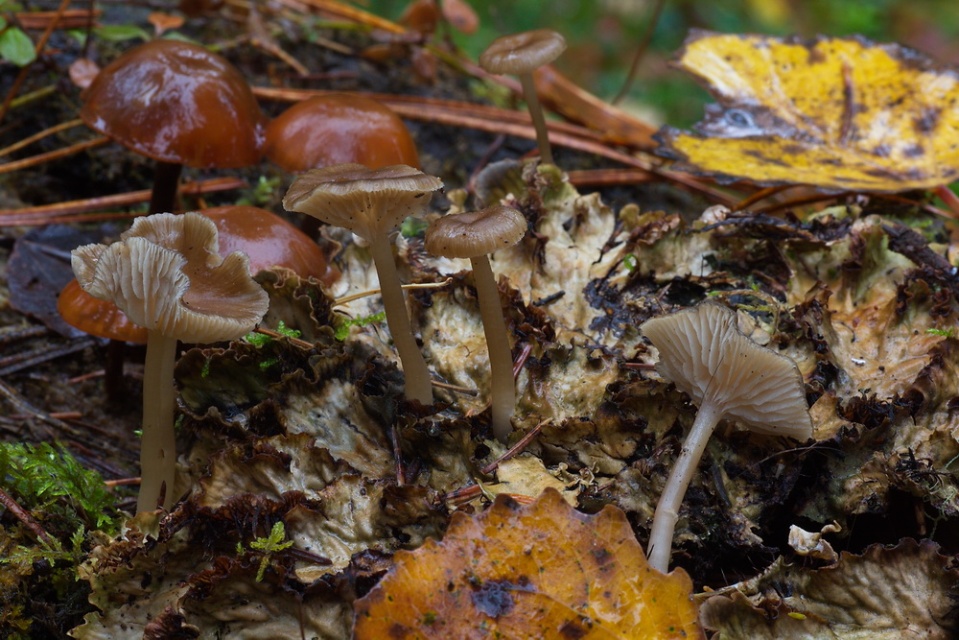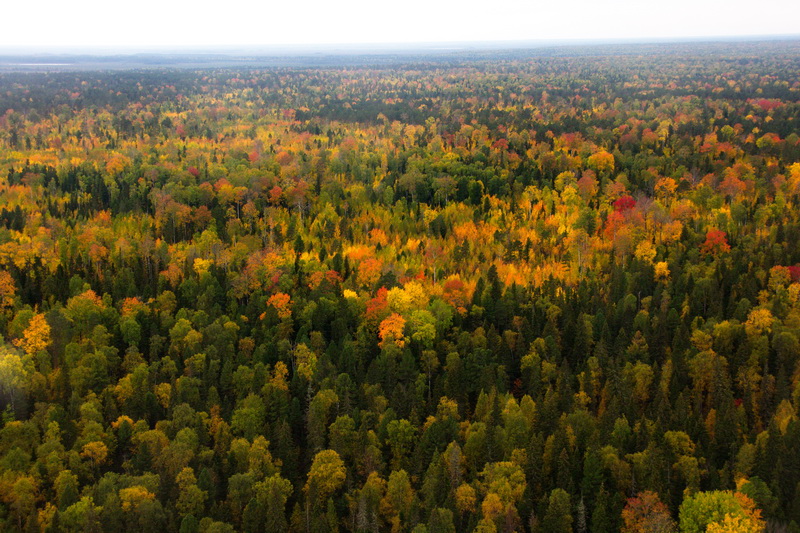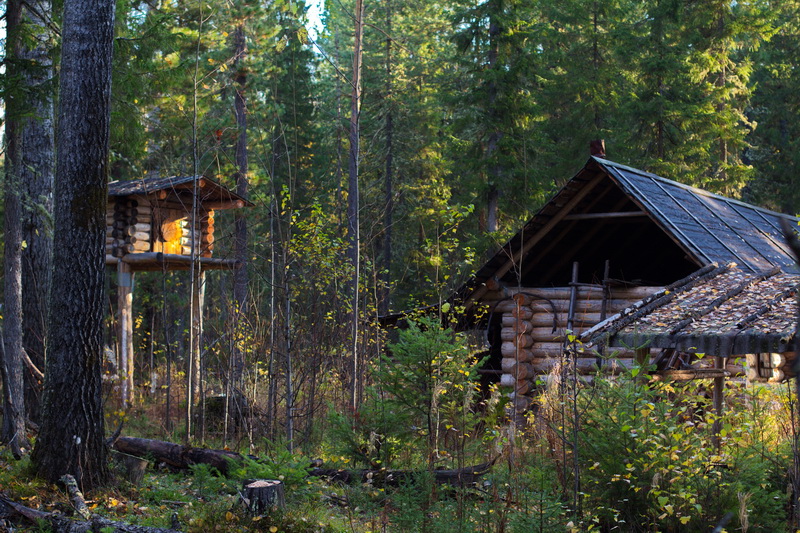In the end of 2011, the Department of Natural Resources signed off on the development of the new edition of the Red List of Khanty-Mansi Autonomous Region (a.k.a. Yugra), a document that contains listings and descriptions of rare and endangered species of the area and states measures to ensure their protection.
Elena and I were invited to the workgroup on fungi: we were to decide which (known) species deserved the special protection status, justify our choice and create proper descriptions, images, and distribution maps. The story deserves a separate post (eventually… someday).
We planned several fieldwork events for 2012 for the workgroup in order to extend our knowledge of the mycobiota of the region. I know this may sound perplexing to a “civilized” mycologist (amateur or professional), but in Russia the mycologists per square km ratio is such that even several weeks of thorough surveying do make a huge difference. To illustrate, there are currently less than 10 active field mycologists in Krasnoyarsk region (way less), and the area of this region is almost two and a half million square kilometers. Things aren’t any better in Yugra, much of which is unpopulated impenetrable taiga and peatlands.
 But, as usual, things went their own way, and ultimately the big plan boiled down to just two – spontaneous – expeditions. The first one, in the end of July, was a disaster – albeit an exciting one (we joined a team of firefighters had to flee from a forest fire). In September, I joined Elena and one of the reserve’s rangers in what’s called учеты боровой дичи (something like upland fowl route survey, to monitor populatons of various grouse species). We were air landed to a remote ranger house on the southwest corner of the nature reserve territory, aptly named Medvezhiy Ugol (Bear’s Corner, a Russian expression meaning a remote spot, wilderness, boondocks, …).
But, as usual, things went their own way, and ultimately the big plan boiled down to just two – spontaneous – expeditions. The first one, in the end of July, was a disaster – albeit an exciting one (we joined a team of firefighters had to flee from a forest fire). In September, I joined Elena and one of the reserve’s rangers in what’s called учеты боровой дичи (something like upland fowl route survey, to monitor populatons of various grouse species). We were air landed to a remote ranger house on the southwest corner of the nature reserve territory, aptly named Medvezhiy Ugol (Bear’s Corner, a Russian expression meaning a remote spot, wilderness, boondocks, …).
Territorially, Medvezhiy Ugol (click to see map) is located in the geobotanical province know as south taiga, in a densely forested, highly bogged area where several important rivers of Western Siberia originate as a network of small winding rivulets.
Interesting finds began on the way from the H-pad: while dragging my backpack to the house, I found a weathered Limacella illinita var. rubescens, a peculiar, slimy, and rare relative of the Fly Agaric; on a pile of old logs left after the building of the house we found several bright orange-yellow fruitbodies of Ophiocordyceps cf. corallomyces, a fungus which kills and eats fly pupae buried in rotting wood; several days later we came across a rare peatbog coral fungus, Clavaria sphagnicola – to name a few.
We spent a blissful two weeks hiking, collecting and determining. We came there shortly after the diversity peak of late August and early September, nevertheless we recorded 221 species, 44 of them were first-time collections for Yugra.
One of the most interesting finds was one of the least colorful of all. In fact, we failed to notice it for days even though it grew virtually on our doorstep.
 Arrhenia peltigerina (Peck) Redhead, Lutzoni, Moncalvo & Vilgalys 2002 is one of the few fleshy fungi which are of interest both to mycologists and to lichenologists. It is a small, brownish-gray (or grayish-brown) and overall inconspicuous agaric that’s remarkable in that it grows on thalli of big, leafy lichens of the genus Peltigera, a.k.a. dog lichens; their relationship is most likely parasitic. There is little information available on this species. It is said to be widely distributed, but probably often overlooked or just rarely forms fruitbodies even where its mycelium is present.
Arrhenia peltigerina (Peck) Redhead, Lutzoni, Moncalvo & Vilgalys 2002 is one of the few fleshy fungi which are of interest both to mycologists and to lichenologists. It is a small, brownish-gray (or grayish-brown) and overall inconspicuous agaric that’s remarkable in that it grows on thalli of big, leafy lichens of the genus Peltigera, a.k.a. dog lichens; their relationship is most likely parasitic. There is little information available on this species. It is said to be widely distributed, but probably often overlooked or just rarely forms fruitbodies even where its mycelium is present.
The thing is, most lichens are extremely sensitive to environmental pollution; they thrive only in very clean places (for example, there are virtually no lichens in the center of Novokuznetsk, a city famous for its metallurgic plants). It’s possible that A. peltigerina needs good, well-fed, and healthy Peltigera in order to produce fruitbodies. The forest around Medvezhiy Ugol is full of all sorts of lichens: from gorgeous “tree hair” such as Ramalina, Evernia and Bryonia to bright patchy lichens on tree bark and fallen trees. The latter were often carpeted with large colonies of Peltigera spp. We noticed that some of these colonies were discolored in a peculiar way, with white spots on green leafy thalli resembling patterns on leaves of variegated forms of cultivated plants. Eventually we found that often where there was discoloration, there were also small, grayish, Omphalina-like fungi – I guess it took us so long because numerous brighter wood-inhabiting mushrooms (Pluteus, Tubaria, Galerina, etc.) nearby effectively drew our attention from their modest comrades. It took us a while to see the connection 🙂

Arrhenia peltigerina. Note the discoloration of the lichen. The brown fungi on the left are either Galerina marginata or Kuehneromyces vernalis.
Over the next few days, we found numerous colonies (infestations?) of Arrhenia peltigerina by looking for discolorations on Peltigera pads. The mushroom seems to prefer large, moist colonies of Peltigera growing on large, well-decayed fallen trunks of aspen (Populus tremula). Shame on us, but we still haven’t found out the exact identity of the Peltigera they grew with.
We collected several specimens and from now on we’ll be looking for this species in other places.
You may wonder – why give such an obscure species special protection status? The answer lies in its ecology: since it’s obviously not very commmon, and thrives where there are very healthy lichens, and healthy lichens thrive in clean environment, protecting this species means protecting these pristine, unpolluted spots, which are becoming more and more rare in Yugra, as the (mostly state-owned) oil and gas industry falls all over itself to pump out and export as much carbohydrates as possible as quickly as possible at any price (at this point I’m tempted to whine about what Rosneft does to the land around Ugut, but it’s a separate story)….


